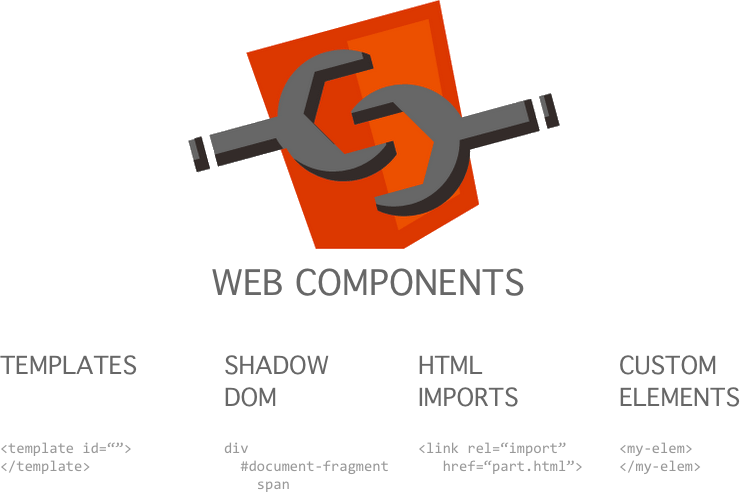Google developed a core library for styling and defining Web Components, called as Google Polymer. Its public development started in November 2013. Polymer helps you define your own custom HTML elements using set of W3C standards and upcoming browser APIs that Polymer has.
Using Google Polymer is very much similar to Angular directives. But off course it is different too. Polymer was first introduced by Google on Google I/O 2013. Google I/O is an annual event/conference for developers that hosts inspirational talks, technical sessions focused on building mobile, web and enterprise applications with Google and other open web technologies. It was first started with Google I/O 2008.
Google’s Polymers is a first library, one of its kind. It fully embraces the new brave web platform. It has brought the revolution in the area of web components.
Polymer basically enables developers to work with web components and the four underlying low-level APIs – HTML imports, HTML templates, shadow DOM and custom elements.
At Google I/O 2014, the Polymer team announced their ambition to drive Polymer forward by providing an extensive library of prebuilt elements for developers, that would be based on material design guidelines. At Google I/O 2015, Polymer version 1.0, the production-ready version was announced officially.
Difference between Angular and Polymer
Angular provides a complete framework for building webapps. Polymer is a complete library for Web Components creation which can be used to build a webapp. Polymer does not provide high level APIs for things like services, server communication, routing and the like, but Angular does. But Polymer focuses on allowing you to create rich, powerful and reusable web components, that can be used to build webapps.
Components of Polymer:
When Polymer announced the production-ready version 1.0, it included various sets of element product lines. These are reusable building blocks that are pre-built for developers and will enable an ecosystem of modular building blocks. These elements are as follows:
Fe – Iron Elements:
These utility elements handles basic layouting and core functionality, without applying any complex visual styles.
Go – Google web components:
These are wrappers for Google APIs and services like elements for Google Maps, Google Calendar and YouTube.
Md – Paper Elements
These are web component implementation of material design based on iron element.
Ne- Neon Elements
It provides all fancy special effects. Presently, only a web animations elements is there, which has some cool demos.
Au – Gold elements
These special elements can be utilized for e-commerce, such as credit card input elements and more.
Pt – Platinum elements
These elements have components that enables complex web app functionality like push notifications.
Mo – Molecules
These molecule elements are wrappers for other JavaScript libraries.
This is a basic Polymer repository. The repository of custom elements have even more and fascinating elements. These elements are not essentially based on Polymer but they are compatible, that is the magic of web components.
Polymer Starter Kit is a basic application skeleton, with material design, responsive layout, routine functionality and offline coaching via the service worker API. Polymer provides web components with custom elements that developers can use to mark up the app.
Team of Krify understands the process of website development and mobile applications development from scratch. We have developed award-winning solutions that became popular and has helped our client to achieve their goals. We core competency includes innovative and competitive Mobile Apps, Websites and Web Apps development.
If you are looking for web development and services related to it, then contact us today. We are equipped and well-versed with the latest technology available for web design and development.




